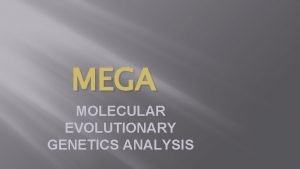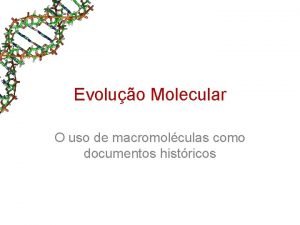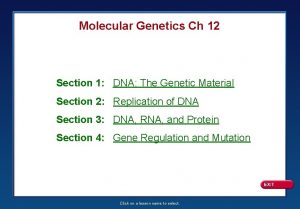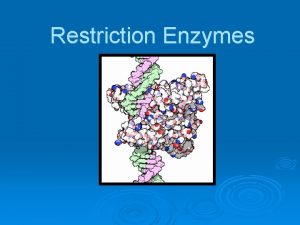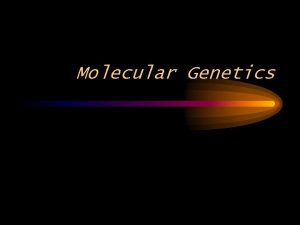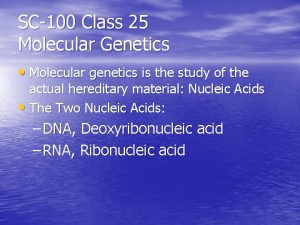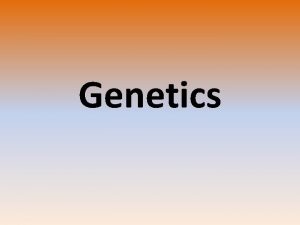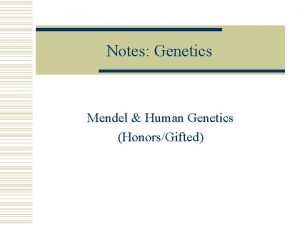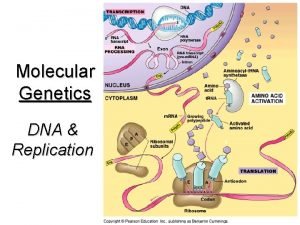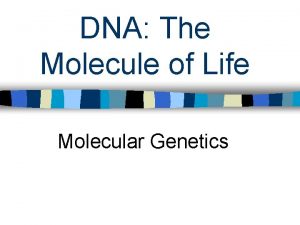Human Molecular Genetics Human DNA Analysis Human DNA











- Slides: 11

Human Molecular Genetics

Human DNA Analysis • Human DNA has ~6 billion base pairs. • Impossible to know everything bases contain. • Search through DNA using sequences of DNA bases.

Testing for Alleles • Use labeled DNA probes – Specific DNA base sequences that detect the complementary base sequences found in disease-causing alleles • Changes in restriction enzymes cutting sites • Differences between the lengths of normal and abnormal alleles

Genetic Tests • Possible to determine whether prospective parents risk passing abnormal alleles to their offspring • Pinpoint the exact genetic basis of a disorder • Develop more effective treatment for individuals with genetic disorders

DNA Fingerprinting • Analyze sections of DNA that have little or no known function but vary widely form one individual to another. • Used to identify individuals. HOW? – Cut small DNA sample with restriction enzyme. – Separate the fragments with gel electrophoresis. – Use a DNA probe to detect fragments with highly variable regions.

DNA Fingerprint

DNA Finger Print

Human Genome Project • Began in 1990 with scientists in the U. S. and other countries. • Analyze the human DNA sequence. • Completed the genome for yeast & a fruit fly. • In 2000, a working copy of the human genome was completed.

Human Genome Project

Gene Therapy • Process of changing the gene that causes a genetic disorder. • An absent or faulty gene is replaced by a normal working gene. • Unsure of how long the benefits will last.

 Molecular genetics section 1 dna the genetic material
Molecular genetics section 1 dna the genetic material Molecular evolutionary genetics analysis
Molecular evolutionary genetics analysis Arvore filogenetica
Arvore filogenetica Section 14-3 human molecular genetics answer key
Section 14-3 human molecular genetics answer key Chapter 12 section 1 dna the genetic material
Chapter 12 section 1 dna the genetic material Chapter 12 molecular genetics answer key
Chapter 12 molecular genetics answer key Molecular genetics and biotechnology
Molecular genetics and biotechnology Chapter 12 section 1 the genetic material
Chapter 12 section 1 the genetic material Covalent bond melting point
Covalent bond melting point Giant molecular structure vs simple molecular structure
Giant molecular structure vs simple molecular structure Giant molecular structure vs simple molecular structure
Giant molecular structure vs simple molecular structure Molecular scissors that cut' dna *
Molecular scissors that cut' dna *

